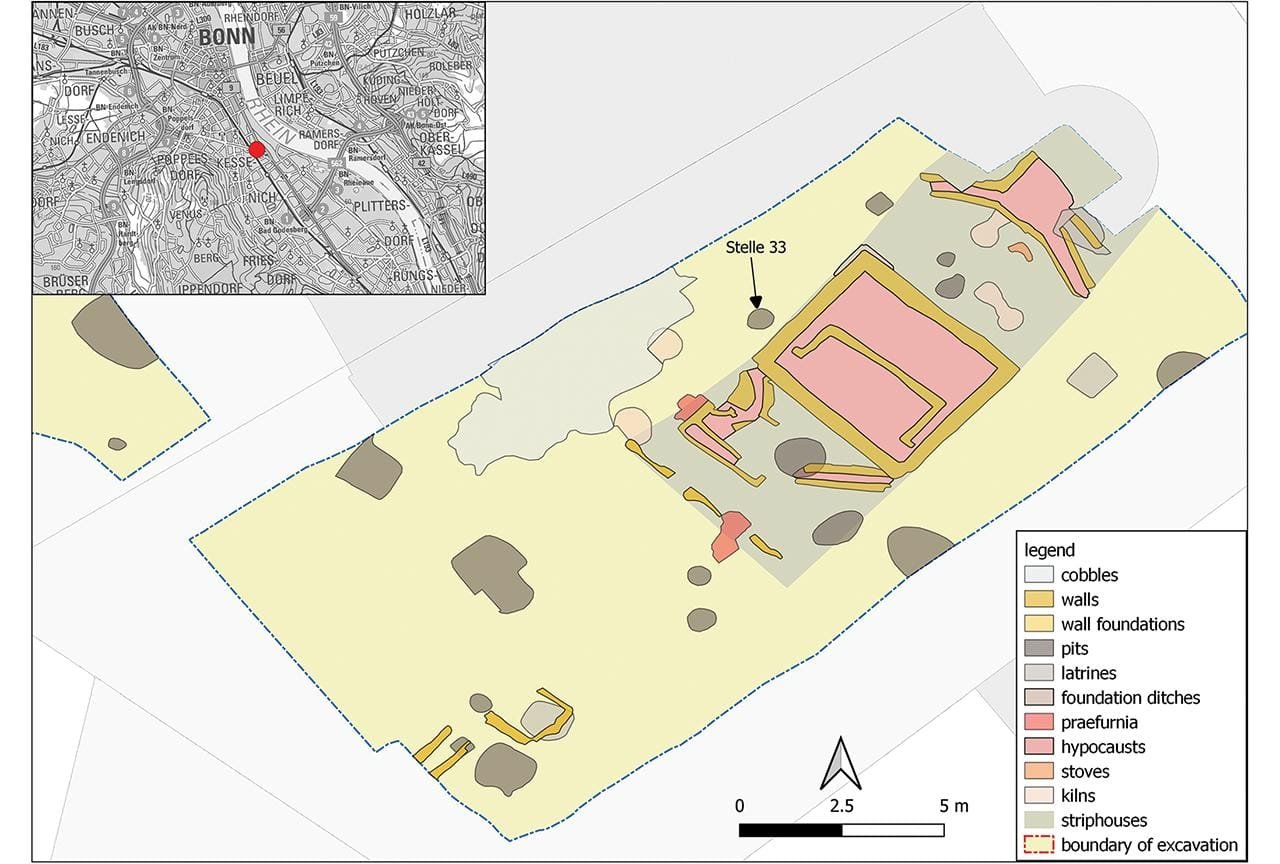A 14-kilogram cache of Roman mail armor, unearthed in 2012 during excavations in a civilian settlement (vicus) near the Roman legionary fortress in Bonn, Germany, has been studied using advanced imaging techniques, revealing how soldiers maintained and recycled their equipment far from supply hubs.

The find consists of at least four mail garments—two nearly complete and two fragmentary—corroded into a single mass over time. Unlike other metal objects, which could be melted down, mail armor comprised small, interconnected rings that necessitated alternative recycling methods. Damaged armor pieces served as “donors” to patch other garments, similar to mending textiles in antiquity.
Researchers from the LVR-Amt für Bodendenkmalpflege im Rheinland, the LVR-LandesMuseum Bonn, and the Czech Academy of Sciences collaborated to analyze the armor using high-resolution computed tomography (CT) scans. “X-ray technology allows us to see what cannot be seen with the naked eye,” explained Holger Becker of the LVR-LandesMuseum Bonn. The scans uncovered details about the intricate construction of the armor, including rings of varying sizes, arranged in patterns typical of Roman chainmail.

Experts believe the cache was a stockpile intended for armor repair. Found in a pit outside a vicus house, it likely served as a resource for local craftspeople who worked closely with the Roman army. Dr. Martijn Wijnhoven of the Czech Academy of Sciences emphasized the significance of this find, stating, “This is the first clear evidence that mail armor was being repaired outside a Roman military installation.”

The vicus, an extramural settlement tied to the Bonn fortress, played a vital role in supporting the military. Local artisans are thought to have processed military waste, including scrap metal, to patch armor. The discovery highlights the symbiotic relationship between Roman soldiers and civilian communities, particularly in frontier regions where the army depended on local support to maintain readiness.
In regions like the Germanic frontier, where resources were scarce, recycling and repair were essential. While other frontier sites often show evidence of ritual or funerary deposits, the Bonn cache appears to be purely functional, abandoned during the systematic dismantling of the vicus in the mid-3rd century CE.

Unlike other abandonment scenarios involving violent destruction, the Bonn vicus was dismantled in an organized manner, likely as part of a planned withdrawal. Heavy materials such as armor were often buried to prevent them from falling into enemy hands.
By relying on recycling and repair, soldiers stationed on the empire’s edges adapted to the challenges of life on the frontier, ensuring they remained battle-ready in even the most remote regions.
The cache is now housed at the LVR-LandesMuseum Bonn.





















